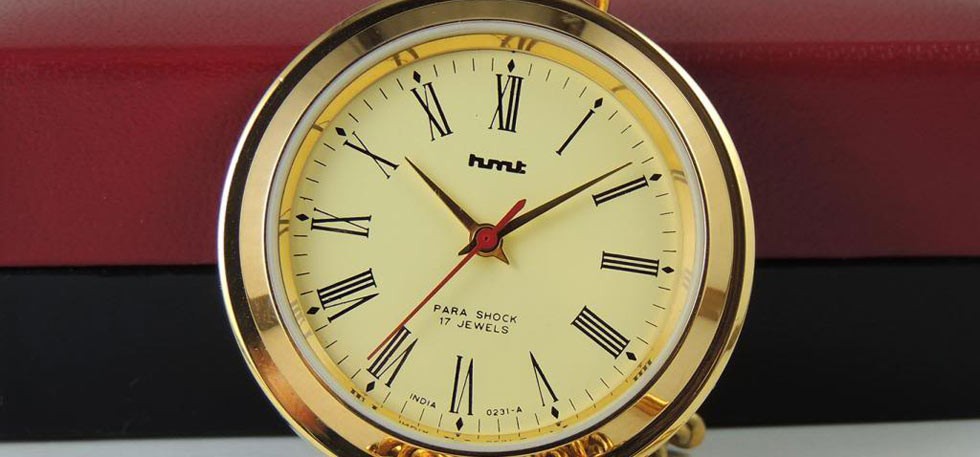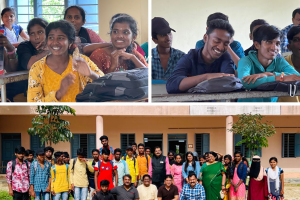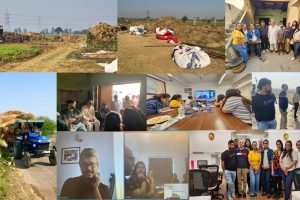Promotion of wristwatches in rural areas in India is not much different from the urban regions today. In both these sectors, watch marketing companies conduct market surveys, demographic studies and pore over their own or third party market research reports. They are guided by user and price positioning data, market segmentation, demographics or attributes such as attractive design, brand image and good quality.
It was much simpler in the late 1970s and early 1980s, though. HMT was the only brand available across the country, both in rural and urban areas. Titan came into the market much later in the ‘80s. “Allwyn”, produced in small volumes by a Hyderabad-based public sector unit, was the only other brand made in India, but was hardly any competition. Virtually, HMT was a monopoly with manufacturing units in four cities and assembly units in 12 towns across the country.
It was during that period (late ‘70s and early ‘80s) that I was a Sales Promotion Officer for HMT watches, with an additional PRO (Public Relations Officer) role for the watch marketing division. In 1981, I undertook rural sales promotion assignments to three areas – Central Bihar (towns around Patna like Vaishali, Rajgir, Gaya and Nalanda); Malwa region of Madhya Pradesh (areas west of Indore comprising towns like Barwani, Khargone and Gandhwani); and Kodagu in south-west Karnataka that included Virajpet, Kutta and Somwarpet towns.
Each assignment was for two weeks. Each region was unique in many ways. Areas around Patna were steeped in history, but were hot and arid; the majestic Narmada meandering along soya bean, cotton and maize growing farms in MP’s Malwa region was a visual treat; and coffee plantations on the slopes of the Western Ghats in Kodagu painted an enchanting picture.
The modus operandi for sales promotion was the same though, in all three regions. We would hire a Swaraj Mazda van for three weeks from Delhi’s Connaught Place for the promotion in Bihar and MP and from Bangalore for the Kodagu tour. The vans were painted on all sides with various models of HMT’s hand wound mechanical watches (quartz watches had still not come into vogue) with prices of each brand displayed prominently. Also painted was HMT’s famous tagline – “Desh ki dhadkan: HMT ghadiyaan”. While it was in Hindi for Bihar and MP, the message was in Kannada for Kodagu.
I would reach the respective regions by train or road around the time the van arrived. The local distributor would join me for the next two weeks. We would also tag along the distributor’s watch mechanic for minor repairs and an announcer with basic knowledge of Hindi and the local dialects (in Kodagu, it was Kannada and the local Kodava dialect). We would travel in the van for most part of the day and retire into a non-descript hall in small lodges for the night. Food was in the local dhabas.
We would cover two villages every day – a smaller village in the first half and a larger one in the second. Parking ourselves in the village square, from nine to twelve in the morning, we would make pre-scripted sales and service announcements on a portable public address system, interspersed with HMT’s radio commercials and popular film songs. Villagers would flock to the van to soak in the rare atmosphere, some of them getting their watches repaired or buying a new one at a discount. The distributor would also give out “letter-press” printed pamphlets giving the address and “land-line” phone number of his outlet in the nearest town. Transactions were entirely by cash.
The agenda in the larger village was more elaborate. From three to five in the afternoon, the van would stop at different points to make announcements interspersed with radio jingles and film songs. We would also invite people to the village square at 6:30 in the evening for the screening of a popular movie. HMT’s TV commercials were also played in-between while watches would be sold and serviced during periodic intervals. (The van was fitted with a draw-down screen and a projector would be placed at an appropriate distance).
I still vividly remember children running excitedly behind the van for as far as they could. We would give them toffees and peppermints as an incentive. People would also get annoyed when the kids ran between the screen and the projector.
In towns like Khargone, Rajgir and Kutta, we would drive around from morning till late afternoon making announcements and stopping periodically for sales and repairs. The distributor’s sales outlet (if there was one in that town) would also be spruced up. At a prominent central place, we would screen a movie in the evening interspersed with TV commercials and sales/service rounds. Films featuring Rajesh Khanna and Amitabh Bachchan were popular in the north while Rajkumar’s movies were a rage in Karnataka then.
At the culmination of each assignment, the team, including the van crew, would have bonded so well that the parting would be very emotional. I still keep in touch with a few distributors from those days, most of whom have passed on the trade to their next generations.
Those were the days of typewriters, cyclostyle machines and paper sheets. Terms and abbreviations like “soft copy”, “online”, “ASAP” and “EOD” hadn’t been discovered yet. It was absolutely fine to submit the report in a week or 10 days. The reporting format was also quite simple. Colleagues and family members would wait eagerly for the local sweets and savouries that I would bring back and would listen intently to the experiences that I would narrate.
Communication was tough in those pre-mobile phone days. We had to queue up at the few “trunk call” booths in the towns and restrict conversations to within two to three minutes. One had to speak loudly – the reason why old-timers shout on mobile phones even today! There were few doctors and pharmacies, so one had to carry basic medicines along.
How things have changed over time. My counterpart today flies to the nearest airport and takes an air-conditioned cab to her destination. She stays in a single room, probably air-conditioned, too – not in a common hall with other women under just one rickety fan. All the time, she is looking into spreadsheets and reports on buying behaviours, demographics, market segmentations and changing lifestyles.
Alas, gone are the days of the humble Swaraj Mazda vans or the much-sought-after Rajesh Khanna, Amitabh Bachchan and Rajkumar movies. As well as HMT’s much adored hand-wound mechanical watches. They remain only as pleasant memories of a bygone era!




